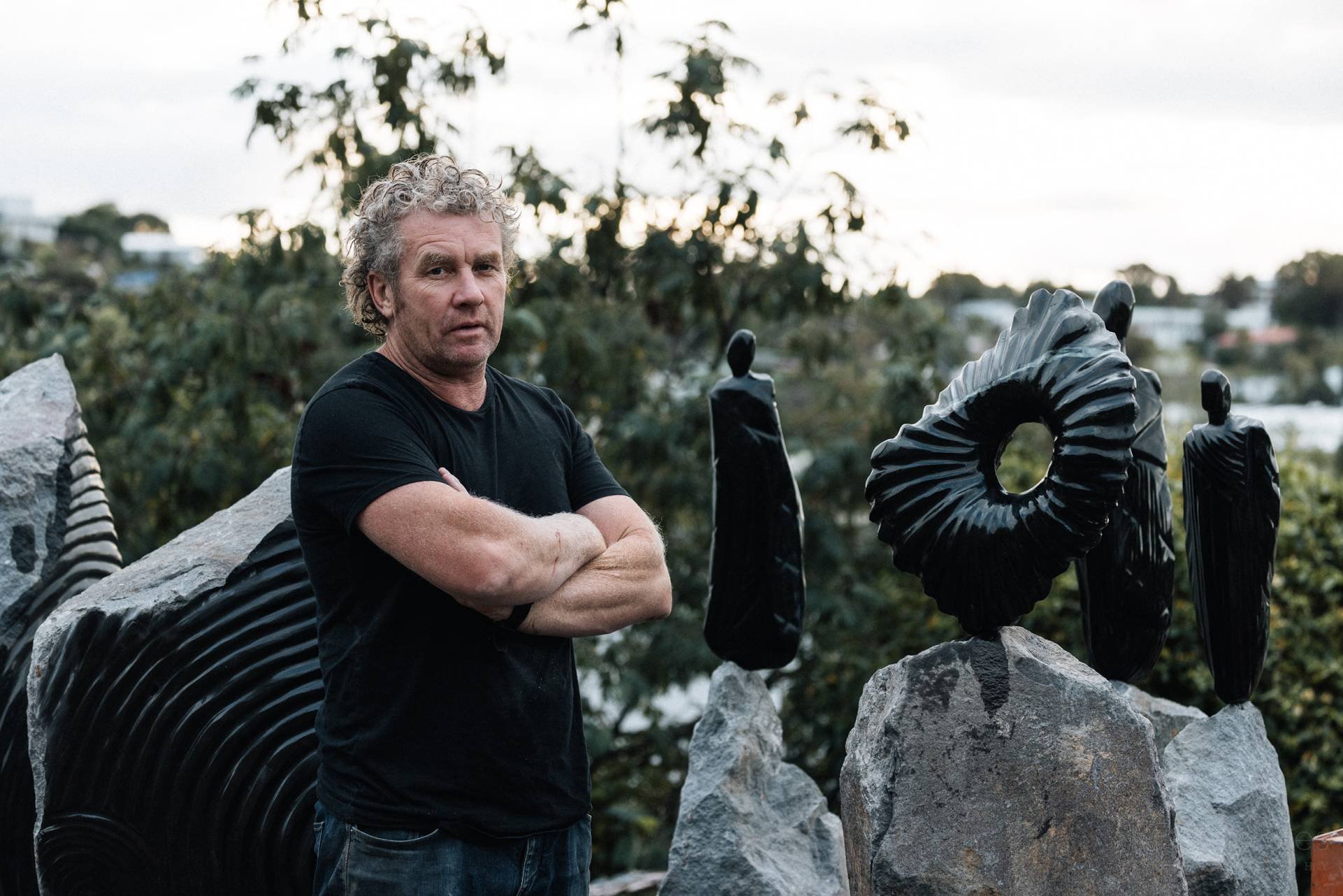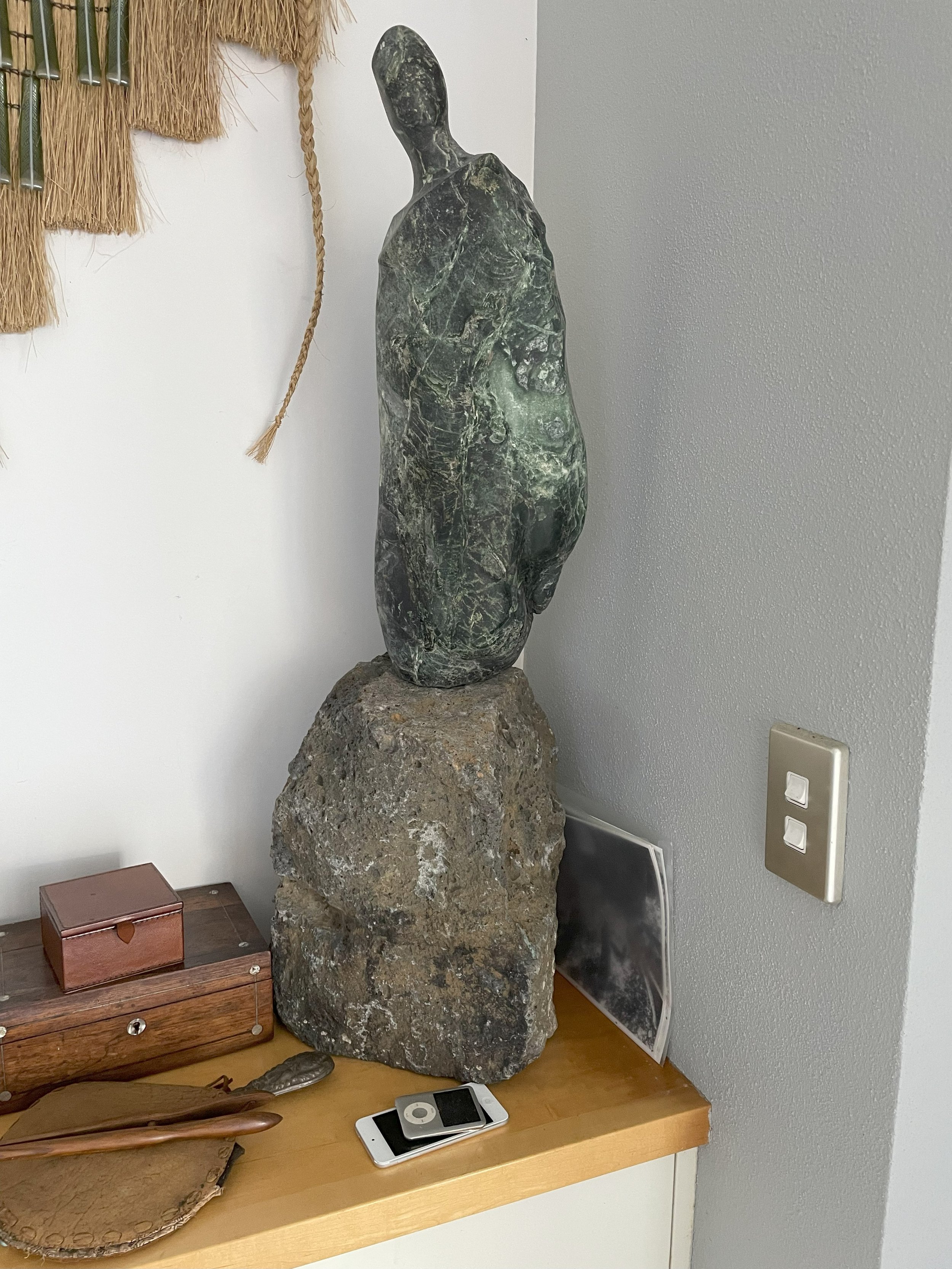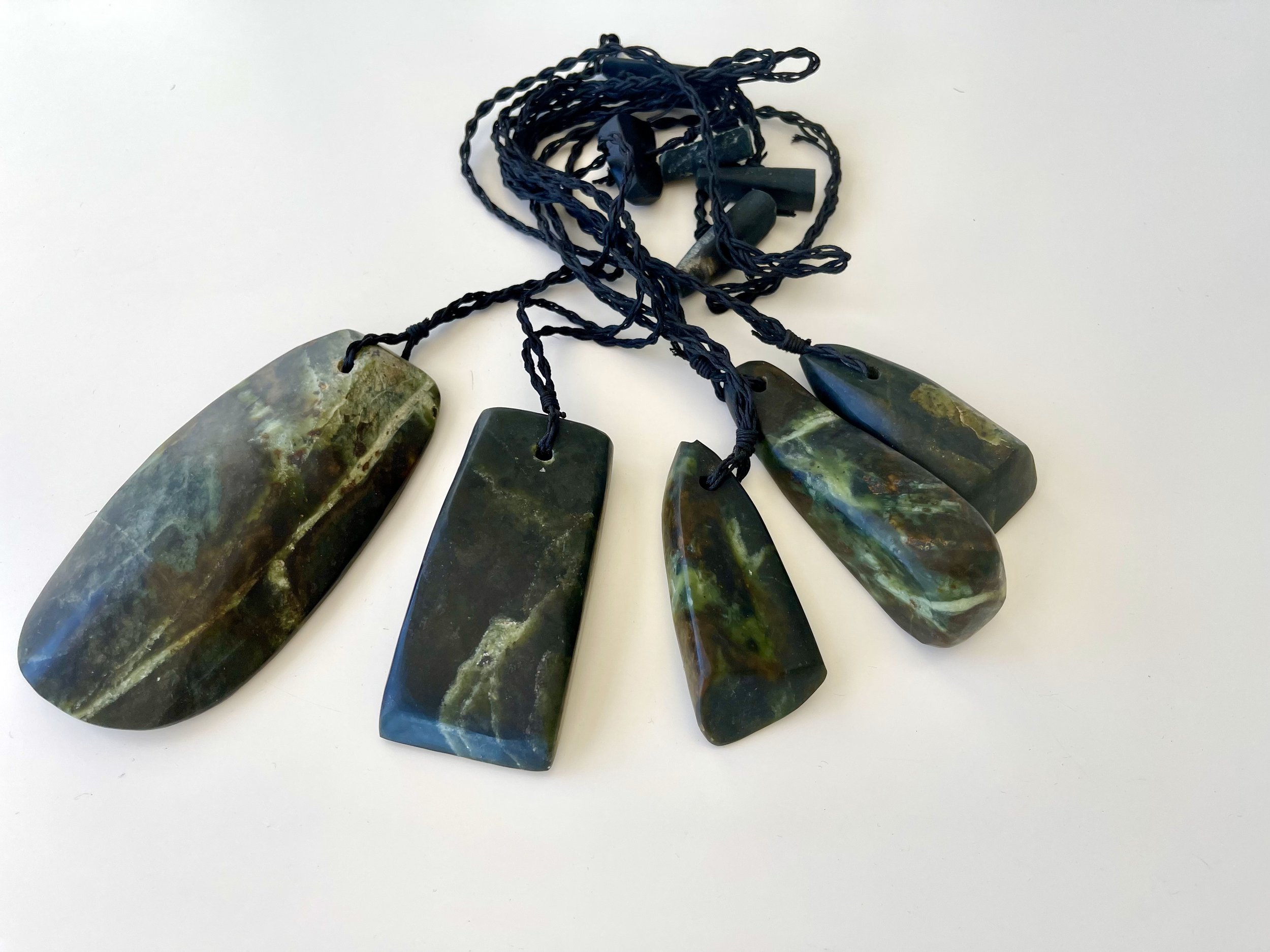
A Waka
A Waka - by Anton Forde
Around seven hundred years ago, on the north shores of Matiatia, a manu/bird- perhaps a Kōmako or a Tūī - swallowed a sweet Pōhutukawa fruit. This fruit had a seed that was dropped by the manu, and as sun, water, Papatūānuku/earth combined, a sacred story began. E tipu e rea / a new growth begins. Around this same time on the other side of the island, skilled navigators found a place to rest, forage and renew. This place was called Rangihoua. The interaction of aroha/love and manawa ora/hope between people and nature continues today.
In 2020, when the world had almost come to a standstill, I reflected on 700 years of growth as this original seedling had turned into a monumental Pōhutukawa which had fallen. An approach was made by Charlotte and Andrew to try and uphold the mana of this seedling and I visited the fallen taonga. During that time, questions were being asked by children all over the world about protecting nature - and we could not answer. I visited the fallen tree many times - walking in silence, climbing like a child, sitting like an old man in this old koro. I slowly formulated a plan grounded in aroha/love and manawa ora/hope for our children, so their questions could be answered through a symbolic, physical statement of kaitiakitanga/stewardship. A waka came into my dreams and Charlotte and Andrew kindly agreed to make it a reality.
The story of aroha and manawa ora started as some of us lost loved ones, whilst others faced illness, and we all faced pandemics, floods, and the reality of changed worlds. At times the waka lay in my yard for months untouched as the realities of having to stop work; an isolated island or other commitments meant she peacefully waited for a time when I could focus without distraction. Every visit from Charlotte and Andrew and tohu/sign from nature kept me inspired.
This waka has required me to stop and think. About the kuaka/godwits which leave this island in March to travel the world, returning in September. About the whai/stingray that slowly glide around the motu. They are represented in the tauihu/bow carving- guiding and navigating us as we make decisions about our waterways and air. I walked in the wetlands where the long-legged pukeko walks, leaving footprints that in whakairo/carving we call Pakura, carved along the rauawa/ side panels. Tangaroa/God of the sea also never left my thoughts and is represented as the kaitiaki/guardian in the taurapa/tail carving.
This is my final waka- it has been my hardest project ever. I am relieved and grateful to have her finished- but also sad as she has travelled with me for four years. She is the waka of all of us, Andrew and Charlotte and their children, Matua George Te Aroha Kahi and whānau, my wife Karle and our children, and perhaps their tamariki, and theirs, ake ake ake.... forever and ever.
Perhaps a little Pōhutakawa seed was dropped by a Tūī or Kōmako this summer.
E tipu e rea/ new growth begins.
Aroha...Manawa ora... Anton Forde, 2024




